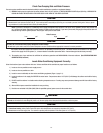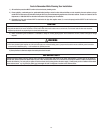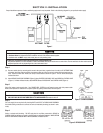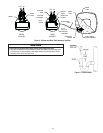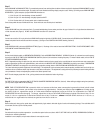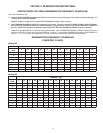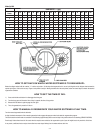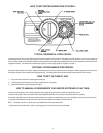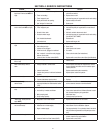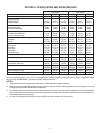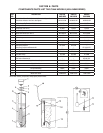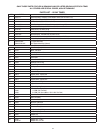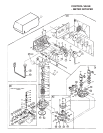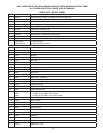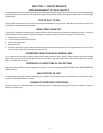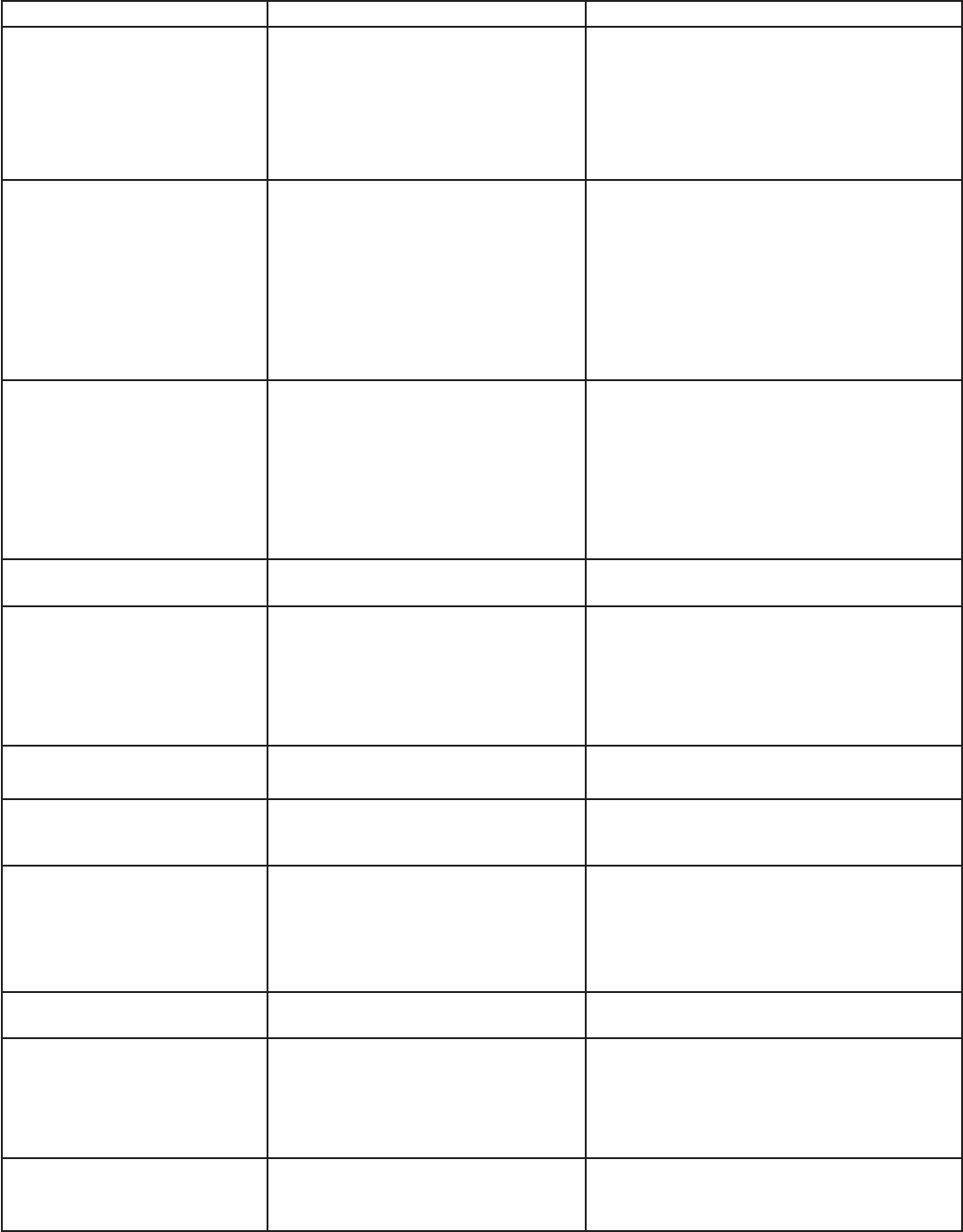
4-1
SECTION 4: SERVICE INSTRUCTIONS
Problem Cause Solution
1) Hard water, (unit NOT using salt;
liquid level in brine tank NOT too
high).
A. Electrical service to unit interrupted. A. Assure permanent electrical service (check fuse, plug,
pull chain or switch.)
B. Timer not working. B. Replace timer motor.
C. Timer improperly set. C. Increase frequency of regeneration and/or salt setting.
D. Safety brine valve not opening. D. Replace safety brine valve.
E. Salt “bridged” in brine tank. E. Breakup salt.
2) Hard water, (unit using salt; liquid
level in brine tank NOT too high).
A. Bypass open. A. Close bypass (replace if necessary).
B. Timer improperly set. B. Increase frequency of regeneration, or reset timer if
needed.
C. No salt in brine tank. C. Add salt; maintain above water level.
D. Excessive water usage. D. Increase frequency of regeneration and/or salt setting
(See HOW TO SET TIMER).
E. Unit installed backwards. E. Reinstall unit.
F. Unit undersized F. Replace with larger unit.
3) Liquid level in brine tank TOO
high.
A. Brine valve not closing. A. Replace brine valve.
B. Salt setting too high. B. Reset timer.
C. Injector screen plugged. C. Clean injector and screen.
D. Drain line frozen, plugged or restricted. D. Free drain.
E. Salt "mushed" or sand from salt plugging
bottom of brine tank.
E. Clean out brine tank (See Instructions).
F. Incorrect brine line fl ow control (BLFC). F. Replace with correct fl ow control (See Specifi cations).
4) System regenerates at wrong
time-of-day.
A. Power outage occurred. A.
Reset timer.
5) Water continuously fl ows to
drain.
A. Foreign material in control valve. Remove piston assembly and inspect bore; remove
foreign material and check control in various regen-
eration positions.
B. Internal control leak. Replace seals and/or piston assembly.
C. Control valve jammed in brine or backwash
position.
Replace piston, seals and spacers.
6) Water tastes salty. A. Salt setting too high. A. Reset program cycle.
B. Cyclone (distributor) tube too short. B. Replace.
7) White spots on glassware and
dark surfaces.
A. Sodium residual resulting from water having
very high hardness or total dissolved solids
(TDS).
A. Installation of additional water treatment equipment
such as reverse osmosis or demineralization.
8) Low water pressure (low fl ow
rate).
A. Iron build-up in line to water conditioner. A. Clean line to water conditioner.
B. Iron build-up in water conditioner. B. Clean control and add Iron-X Mineral Cleaner to resin
bed; increase frequency of regeneration.
C. Well pumping sand. C. Install sand trap.
D. Pump losing capacity. D. Contact pump repair service.
9) “Rotten egg” smell (from hot
water ONLY).
A. Magnesium rod in water heater. A. Replace with aluminum rod or remove.
10) “Rotten egg” smell (from both
hot and cold water).
A. Hydrogen sulfi de ("sulfur") in water supply. A. Install Sulfur Reduction System.
B. Bacterial iron in water supply. B. Install Chem-Free Iron Reduction System.
C. Algae in water supply. C. Pour approximately 1/2 cup laundry bleach into brine
well just before regeneration as frequently as neces-
sary.
11) Loss of resin through drain line. A. Air in water system. A. Assure that well system has proper air eliminator
control; check for dry well condition.
B. Incorrect Drain Line Flow Control (DLFC). B. Replace with correct DLFC.



